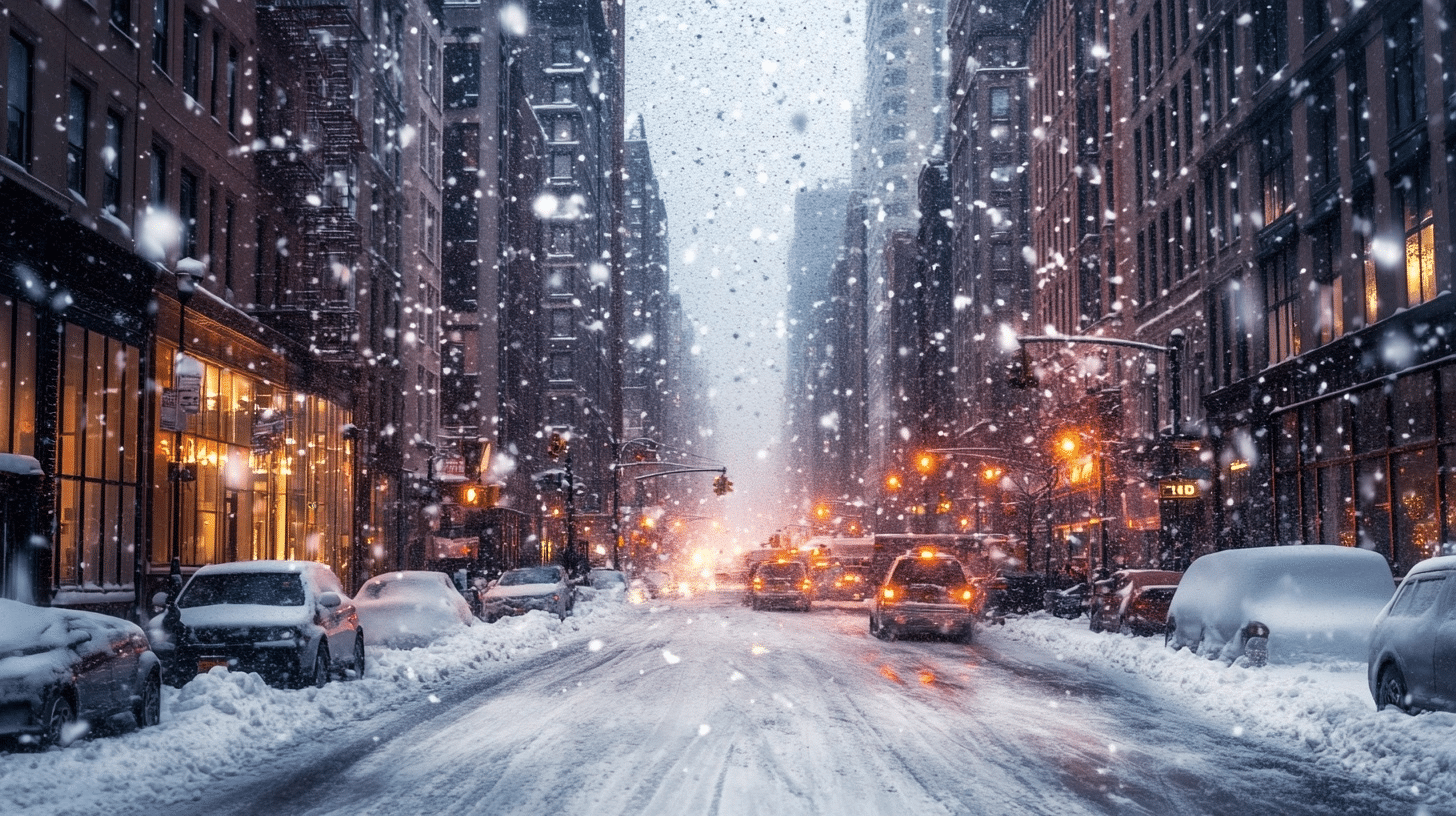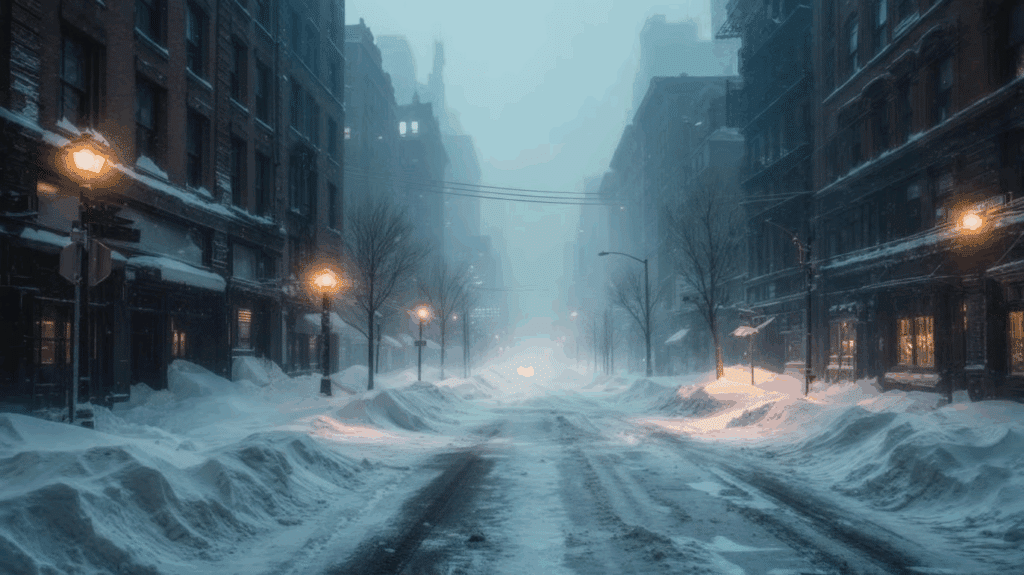Most people think blizzards are simple winter storms. Just heavy snow, strong winds, and freezing cold that bring cities to a halt. Everyone knows they’re dangerous and can trap people indoors for days.
But blizzards hold secrets that most folks never learn about. These winter giants have surprising facts that go way beyond the basic snow and wind story.
This post reveals little-known truths about blizzards that will change how readers see these powerful storms.
What is a Blizzard?
A blizzard is a severe snowstorm characterized by strong winds of 35 mph or more and low visibility due to blowing or falling snow.
Unlike regular snowstorms, blizzards involve high winds and can cause dangerous whiteout conditions.
For a blizzard to occur, wind speeds must exceed 35 mph, and snow must be blowing or falling for at least three hours. Understanding blizzards is crucial for safety, as they can lead to hazardous travel conditions, power outages, and dangerous cold temperatures.
Fun Facts About Blizzards

1. Blizzards can last from a few hours to several days, depending on the storm’s strength.
2. A blizzard requires wind speeds of at least 35 mph (56 km/h) combined with blowing or falling snow.
3. Blizzards don’t need a specific snowfall amount, just wind and visibility.
4. Some blizzards reduce visibility to near zero, causing dangerous whiteout conditions.
5. Blizzards are most common in the northern U.S. and Canada during winter.
6. Temperatures can drop rapidly during a blizzard, sometimes by 10–20°F (6–11°C) in minutes.
7. Wind chill during a blizzard can make it feel much colder than the actual temperature, increasing frostbite risk.
8. The Great Blizzard of 1888 paralyzed the Northeast U.S. and is one of the most infamous in history.
9. A snowstorm only becomes a blizzard if the wind and visibility criteria are met.
10. Blizzards frequently knock out power for days, leaving entire communities in darkness and cold.
11. Snowdrifts from blizzards can reach several feet high, burying cars and homes.
12. Roads can become so icy that travel is nearly impossible during blizzards.
13. Blowing and drifting snow can persist for days after a blizzard, extending hazardous conditions.
14. The 1978 blizzard in the U.S. stranded thousands in cars for days.
15. Blizzards combine extreme cold, strong winds, and low visibility, making them very dangerous.
16. Coastal areas can experience blizzards due to moisture from nearby oceans or lakes.
17. Blizzards are different from snowstorms because they involve high winds.
18. Snow can accumulate quickly, with several inches falling in an hour.
19. Extreme blizzards can trap people inside their homes for days.
20. Blizzard winds can blow snow horizontally, disorienting travelers and making visibility near zero.
21. Blizzards are common from late winter to early spring in some regions.
22. Whiteout conditions happen when snow and wind reduce visibility so much that the horizon disappears.
23. Blizzards form during low-pressure systems that bring cold air and moisture.
24. Blizzards can have wind gusts over 75 mph (120 km/h), causing severe damage.
25. Blizzards can occur in areas that don’t usually get much snow, given the right conditions.
26. Blizzard snowflakes are small and light, making them easier for the wind to blow around.
27. Snow from a blizzard can freeze into thick sheets of ice, making it hard to walk or drive.
28. During a blizzard, it’s safest to stay indoors, avoiding travel unless absolutely necessary.
29. Heavy snow and ice from blizzards can cause roofs to collapse and damage buildings.
30. The 1888 blizzard killed over 400 people, making it one of the deadliest in U.S. history.
31. A “ground blizzard” occurs when strong winds stir up loose snow from the ground, even without new snow.
32. An emergency kit is essential during blizzards in case of power outages or getting stranded.
33. The term “blizzard” originated in the American Midwest in the 19th century.
34. Frostbite and hypothermia can occur in under 30 minutes during exposure in a blizzard.
35. Blizzards often cause closures of schools, businesses, and roads due to unsafe conditions.
36. The 1993 “Storm of the Century” brought blizzard conditions to the Eastern U.S., affecting millions.
37. Blizzards can be particularly tough on urban areas, where snow removal is more difficult.
38. Blizzards can trigger snow squalls, sudden bursts of snow and wind.
39. Blizzards sometimes occur alongside ice storms, compounding the danger.
40. Blizzards cause more winter storm-related deaths than other types of winter weather.
41. Blizzard winds can break branches and down power lines, leading to widespread outages.
42. Blizzards can develop rapidly, making preparedness crucial.
43. Blizzards can destroy crops, damage infrastructure, and make roads impassable for weeks.
44. Blizzards cause extensive delays at airports, stranding thousands of travelers.
45. A “whiteout” happens when snow and wind make it hard to distinguish the ground from the sky.
46. Blizzards near the Great Lakes are often more intense due to lake-effect snow.
47. Cleaning up after a blizzard can take weeks as snowplows work to clear streets.
48. Blizzards are among the most dangerous natural disasters, due to the combination of snow, wind, and cold.
49. Wind chill can make temperatures feel up to 50°F (28°C) colder than the actual temperature.
50. If stranded, staying in your vehicle is safer than trying to walk for help during a blizzard.
51. Blizzards can isolate remote communities for days, delaying emergency response and aid.
Common Myths About Blizzards
| Myth | Fact |
|---|---|
| Blizzards always mean heavy snow. | Blizzards are defined by strong winds and low visibility, not just snow. |
| You can safely drive through a blizzard. | Driving during a blizzard is dangerous due to poor visibility and icy roads. |
| Blizzards only happen in very cold places. | Blizzards can occur in regions that don’t usually get much snow. |
| Snow accumulation during a blizzard is always high. | Snow accumulation can vary, but strong winds can cause blowing snow instead. |
| Blizzards stop immediately once the snow ends. | Blizzards can last for hours or even days, even after snow stops falling. |
The Bottom Line
Now you know that blizzards are far more complex than simple snowstorms. These winter events create unique conditions that affect everything from sound waves to animal behavior.
Share this post with friends who love weather facts. And remember to stay safe when the next blizzard rolls through your town.


















